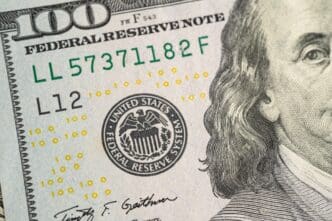Executive Summary
The Story So Far
Why This Matters
Who Thinks What?
Rising tariffs are contributing to increased costs for a range of everyday consumer goods, exacerbating concerns among consumers and Federal Reserve policymakers amidst a fragile labor market. A recent Bureau of Labor Statistics report highlighted price increases for tariff-sensitive items, prompting the central bank to consider its monetary policy stance ahead of its meeting next week.
Tariffs and Consumer Prices
The Bureau of Labor Statistics data indicated price surges in categories including apparel, video/audio products, motor vehicle parts, new cars, energy, groceries, furniture/bedding, and tools and hardware. Goods excluding food and energy recorded a 0.3% rise month-over-month and are up 1.5% from a year ago, marking the fastest rate since May 2023.
Notably, coffee prices increased by 3.6% in the last month and have climbed 20.9% over the past year. While these individual increases may not appear dramatic, their cumulative effect is creating unease for consumers, who are reportedly curtailing spending, and for central bank officials.
Federal Reserve’s Dilemma
Inflation, currently hovering near 3%, remains above the Federal Reserve’s long-term target of 2%. This persistent inflation, combined with signs of weakness in the labor market, presents what some economists describe as a “stagflationary conundrum” for the Fed.
Economists generally view tariffs as a temporary influence on prices rather than a long-term driver of inflation. However, the current persistence in prices coupled with a softening labor market complicates the central bank’s decision-making process.
Federal Reserve officials are scheduled to convene next week to deliberate on potentially lowering their key overnight funds rate. Market expectations currently anticipate the equivalent of six quarter-percentage-point cuts over the upcoming period, surpassing the four cuts projected in the Fed’s previous outlook.
Despite the tariff-related price pressures, policymakers are expected to prioritize indicators of labor market weakness. Recent economic data point to a slowdown in the broader economy, the job market, and consumer spending, factors that are likely to outweigh the more minor tariff-induced price increases in their considerations.
The central bank will also scrutinize the labor market’s fragility, evidenced by initial unemployment insurance claims reaching a recent high. Furthermore, recent data suggest virtually no job growth has occurred this year, adding to concerns about economic momentum.
Outlook
In summary, while tariffs are contributing to higher prices for various goods, the Federal Reserve faces a complex decision, balancing these inflationary pressures against a weakening labor market and broader economic slowdown. The central bank’s upcoming meeting will likely focus on addressing job market fragility, with potential implications for interest rates and the economy’s trajectory.








